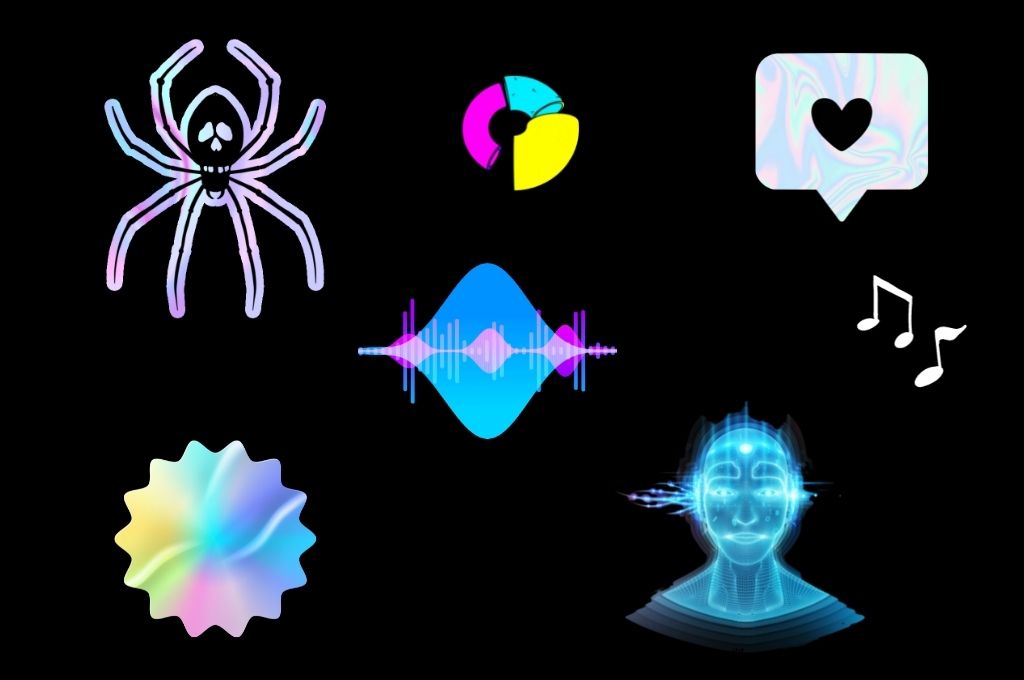What is a trade mark? This seemingly simple question should lead to an equally simple answer, namely it is something that makes it possible to clearly identify the goods marked with it. But it all depends on who we ask our question to.
A Polish patent attorney would probably supplement their response with the features that the trade mark must have as a sign (i.e. it must be perceived sensually, uniform, autonomous and presented clearly and precisely) as well as information related to the requirements of the Polish Patent Office as regards the specification of the object of protection. The mark should be submitted to the Office in a form allowing its reproduction in the official register in a clear, precise, self-contained, intelligible, durable, objective and easily accessible manner.
(And there is a good chance that the patent attorney would not stop there – like any specialist asked about something not entirely or not always obvious in their field of expertise.)
A patent office expert would also provide a list of desirable and undesirable features of the trade mark in accordance with the practice in their jurisdiction, which, although they may seem trivial at first glance, are in fact crucial factors in deciding whether the registration of a submitted mark will be granted or refused.
A consumer would add that the mark should be aesthetic, not too complicated and characteristic.
As a result, instead of a simple answer, we have even more questions, such as “What exactly should a trade mark look like in order to be registered?”
Shape of the mark
In the past, there were three main trade mark types distinguished:
1) Word marks, e.g. such as the one registered under number R-151187:
KROKODYL
2) Word and graphic marks, e.g. the one registered under number R-178871:

3) Graphic marks, e.g. the mark registered under number R-178780:
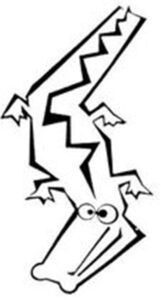
In recent years, in response to market needs, authors’ growing creativity and (which is particularly pleasing) consumers’ growing awareness, new types of trade marks have been introduced, namely non-traditional trade marks, among which the following can be distinguished:
1) Spatial marks, e.g. the one registered under number R-307660:
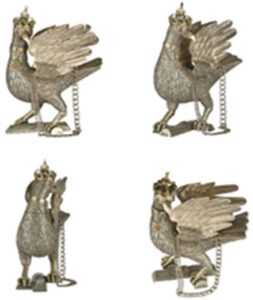
These are representations of the same mark from different angles to present it properly.
2) Position marks, e.g. the mark registered under number R-344384:
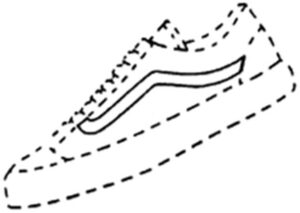
The solid line shows a reserved element, while the dashed line shows the outline of the product for illustrative purposes. This way, we can show where the trade mark is to be located.
3) Pattern marks, e.g. the one registered under number R-328414:
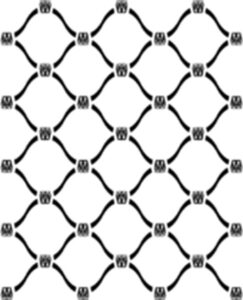
This is a new type of a trade mark which may put an end to the discussion whether a pattern placed on the fabric is a trade mark or only a decorative motif.
4) Colour marks (or colour combinations), e.g. the one registered under number R-271601:

5) Sound marks, e.g. the mark registered under number R-312520:
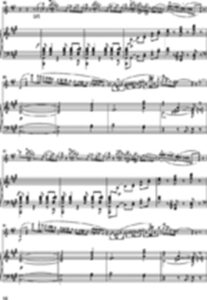
Musical notation allowing the reproduction of a registered sound mark protecting a specific tune – do not confuse it with a graphic mark in the form of notes placed on the stave in a specific order.
6) Motion marks, e.g. the mark registered under number R-340791:

Similar to the spatial mark, the above four graphic representations relate to a single mark and are arranged in a chronological order representing the change occurring in the mark as a result of movement.
7) Multimedia marks, e.g. the one registered under number R-343856:
(Remember to turn on the sound!)
Simply put, these are marks combining animation and sound, which limits their use to specific electronic devices.
8) Hologram marks, e.g. the one registered under number EUTM-018399029:
This is another group of marks whose use is limited to the media that can display them. Each of us has seen a hologram at least once in our lives and knows that the effects of image change can only be seen when we start to move a mark which has been applied to the surface with an appropriate technique – hence the inability to present its full potential in plain printed text.
9) Other marks, including taste, smell and tactile marks.
Strict requirements
Has the introduction of new trade mark types made it easier to obtain a protection right for the mark submitted for registration?
Unfortunately for the Applicants, the answer is no.
Patent offices, both the Polish Patent Office and EUIPO, continue to impose stringent formal and legal requirements on trade mark applications. Moreover, since non-traditional trade marks are a relatively new concept, it seems that experts at the offices responsible for their examination are particularly strict and cautiously grant protection rights to fancy ideas which are perfectly distinguishable to their target consumers, but have not yet had much opportunity to appear in judicial decisions on intellectual property rights.
In addition, while in the case of a sound mark, musical notation (and possible inclusion of a recording on a CD) meets formal requirements imposed on trade marks, in the case of taste or smell marks, the first problem associated with registering them is the way to present them both in the register and in the course of their use for the identification of goods or services.
There is a low probability that a random person from among those browsing through a trade mark register in a database of a relevant office will be able to interpret a complex formula of chemical symbols (even if they know what to expect when they see the formula, for example “NH3,” or the picture:
For those not skilled in the art, ammonia and benzaldehyde respectively, i.e. almond odour.)
In turn, sensual perception of taste and smell is a very individual matter and, for example, the “taste of chocolate” will be understood differently by different people (leaving aside whether we are talking about milk chocolate, white chocolate or dark chocolate, and cocoa percentage), as will the “smell of oranges,” which may be more sweet, bitter or “fresh”. The solution would be to store samples of reserved marks, but at the moment it seems impossible for technical reasons – available fragrance sample carriers have a certain durability, and the premises of the Patent Office have limited space, which will not increase like the space on the server to accommodate new items in the register.
Returning to sound marks, it would seem that the inability to record the sound using notes does not disqualify the sound. With the use of technology (especially the Internet), we can reproduce the mark recorded in the register anywhere in the world and from anywhere in the world, provided that the Office’s database has been made available to external users. Nevertheless, a trade mark, whatever its type, must fulfil (apart from the formal and technical requirements mentioned above) the conditions relating to its distinctiveness.
This is the lesson learnt by Ardagh Metal Beverage Holdings GmbH & Co. KG, which filed an application with EUIPO for a mark in the form of a sound produced when a can of soda is being opened. The idea itself sounds interesting, but it should be considered what goods would be marked with such a mark. In this case, the Applicant listed five classes (6, 29, 30, 32 and 33), which resulted in a refusal to register the trade mark on the grounds that such a sound, in relation to, inter alia, metal containers for liquids, dairy products, beer or coffee and cocoa-based beverages did not meet the requirement of distinctiveness.
In the field of spatial marks, even such a renowned brand as Guerlain had difficulties in obtaining protection for the shape of an elongated, conical and cylindrical lipstick. It was only the judgement of the court in which the Applicant faced the EU Intellectual Property Office that opened the way to registration, annulling the decision of the First Board of Appeal of EUIPO and confirming that although lipsticks had more or less fancy shapes, it did not automatically mean that any new shape presented on its own would be immediately perceived as one of them.
The spatial mark of Guerlain’s lipstick was subsequently registered in the European Union under number EUTM-018333084.0. Looking at the above photographs without context, it is difficult to say what they represent. Is it a very original and exclusive flash drive? Or maybe a switch for a standing lamp? A branded earphone case? A marzipan bar in white glaze?
Patent Attorney will keep you out of trouble
To sum up, in order to save yourself the costs (and stress) associated with the consequences of unintentional mistakes and defects in a trade mark application, it is best to start the application process by finding an experienced patent attorney.
A good patent attorney will answer all the questions, provide necessary advice, and, if necessary, draft the application documentation in a way that will help the Applicant have the mark registered and take full advantage of its potential following registration.
And the potential of non-traditional marks is great and will probably grow even more, if only because of advances in new technologies. One can only imagine what new marks will be added to non-standard trade mark categories in the future. Maybe virtual marks, presented in the real world with the use of 3D projectors, which, having been touched by the user, will change their character? As we have repeatedly seen, the only limit in such cases is human imagination. Afterwards, it is difficult to come up with universal principles that take into account such variable and fancy ideas, but that is a different matter.
Author: Kamila Papiernik
